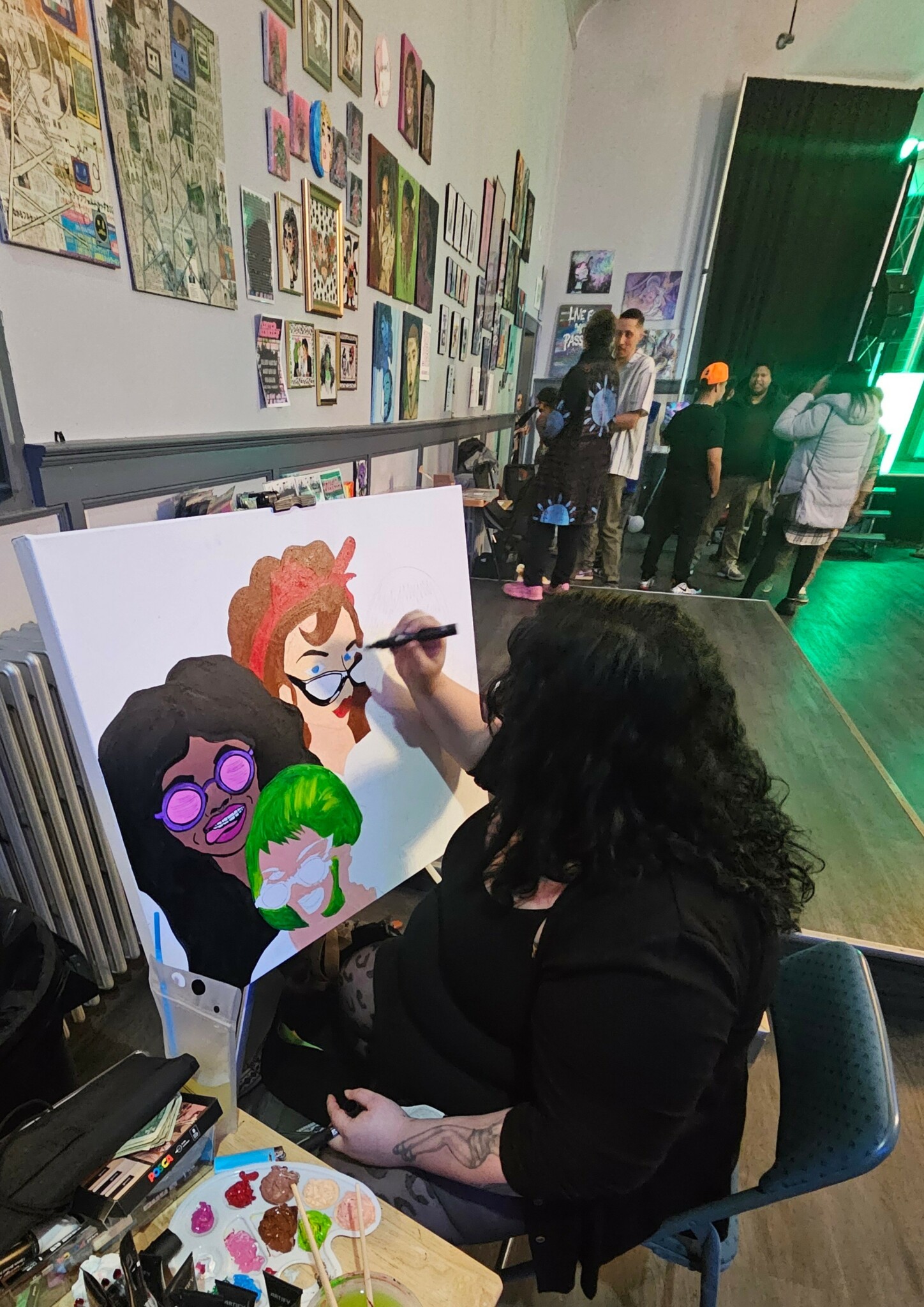Alright – so today we’ve got the honor of introducing you to Alaina Joy. We think you’ll enjoy our conversation, we’ve shared it below.
Alaina, looking forward to hearing all of your stories today. What’s been the most meaningful project you’ve worked on?
One of the most meaningful projects I’ve had the honor to work on was participating in The Vote Project by @she.posse. It was a powerful collaboration that allowed me to advocate for women’s rights and highlight the importance of autonomy in all areas of life. The project centered around using art to inspire civic engagement and raise awareness about critical issues like bodily autonomy, gender equality, and the systemic challenges women face. As someone deeply committed to these ideals, it was an opportunity to use my creativity for something much larger than myself.
Street art, in particular, holds a special place in my heart because it brings these conversations directly into public spaces. It’s raw, unfiltered, and impossible to ignore. Street art challenges comfort zones and sparks immediate dialogue. Working with @mizchaos has been an incredible extension of this passion, allowing me to explore the intersection of bold, public works and collaborative creativity. Together, we’ve pushed boundaries with trippy, otherworldly designs that take my usual work in new directions. These collaborations transform walls and shared spaces into immersive, thought-provoking experiences. By putting our messages directly in front of people, street art ensures that important ideas—whether about creativity, intuition, or simply the joy of seeing the unexpected—reach as many eyes as possible.
Another way I’ve embraced street art and expanded its reach is through sticker art and trading with artists from around the world. Stickers are such a unique and democratic medium—small, portable, and impossible to ignore once they’re out in the world. Through trading and collaborating with other artists globally, we’ve created ongoing projects that transcend borders and connect diverse perspectives. This network of sticker art helps spread our messages far and wide, turning everyday spaces—light poles, benches, and walls—into galleries that everyone can access. It’s a constant reminder that art belongs to everyone and can exist anywhere.
At its core, my art is about advocacy and community. I’m deeply passionate about creating spaces—both physical and conceptual—where marginalized voices are amplified, and important conversations can happen. My work frequently addresses issues like sex work, cannabis, and women’s rights, topics that are often stigmatized, particularly when they intersect with women’s autonomy. I strive to depict women as strong, resilient, and independent, pushing back against societal expectations and harmful narratives. This extends to my work as an ally to the LGBTQIA+ community, where I aim to create safe, welcoming environments where everyone feels seen, heard, and valid.
By intertwining art with activism, I aim to turn each piece into a call to action. I want my work to not just be viewed but felt—sparking dialogue, connection, and change. Whether it’s through public murals, gallery exhibitions, sticker art, or collaborative projects, my goal is to unite people around the causes that matter, breaking down barriers and building understanding across diverse communities. I truly believe in the transformative power of art to inspire reflection and action, and I’m committed to continuing this mission with everything I create.
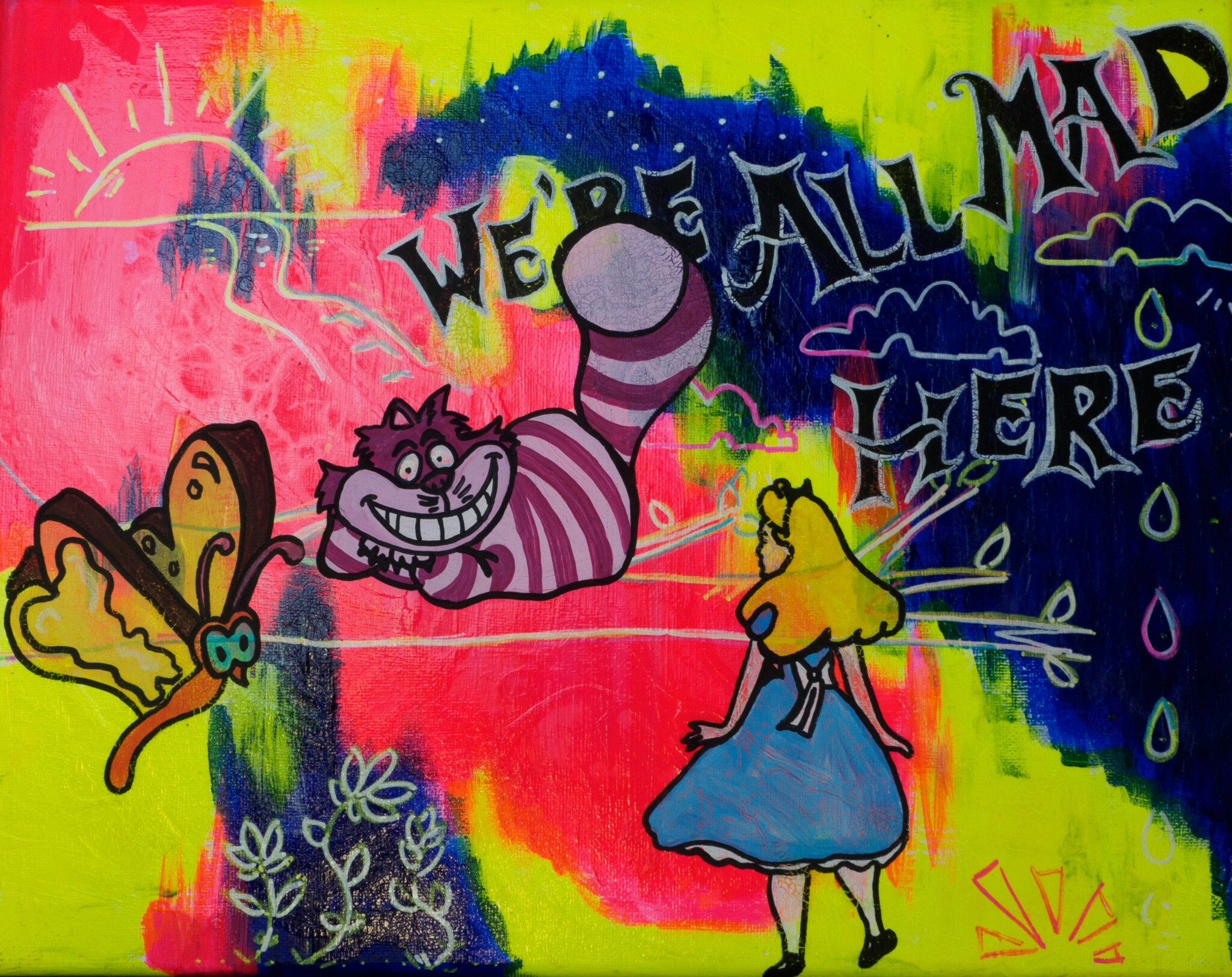

Awesome – so before we get into the rest of our questions, can you briefly introduce yourself to our readers.
My name is Alaina Joy, and my work is deeply rooted in advocacy, community, and the belief that art has the power to create change. I’m the artist behind Painted Thingies, where I focus on using vibrant, thought-provoking visuals to challenge societal norms and spark meaningful conversations. My journey into art began as a personal passion for creative expression, but it quickly evolved into a mission to amplify marginalized voices and inspire action through my work.
My art often explores themes of gender equality and women’s rights, especially in areas where autonomy is frequently questioned, such as sex work and cannabis. I use my work to push back against the stigma attached to these industries, highlighting the importance of choice, agency, and empowerment. I strive to depict women as strong, resilient, and unapologetically themselves, challenging stereotypes and offering new narratives of independence and authenticity.
What sets my work apart is the way it blends art and activism in accessible and unconventional ways. I’m passionate about street art because it takes messages directly into public spaces, making them impossible to ignore. My collaborations with other artists, including @mizchaos, have allowed me to push creative boundaries and transform walls, stickers, and shared spaces into platforms for reflection and connection. Sticker art, in particular, has become a powerful tool for global collaboration, where trading and working with artists around the world creates ongoing projects that bring our messages to light. It’s about turning the everyday—light poles, mailboxes, and public walls—into galleries that anyone can access.
I’m most proud of the way my work engages people and encourages them to think critically about the world around them. Whether it’s through bold street art, thought-provoking sticker campaigns, or other creative projects, my goal is to challenge comfort zones and make space for voices and stories that deserve to be heard.
For anyone engaging with my art, I want you to know that everything I create is rooted in purpose. My work is about making people feel seen, sparking conversations, and inspiring change. By blending creativity with advocacy, I aim to use art as a tool for empowerment, creating pieces that aren’t just visually compelling but also deeply meaningful. Whether it’s a mural, a sticker, or a painting, my goal is to leave an impact—one that encourages reflection, dialogue, and growth.
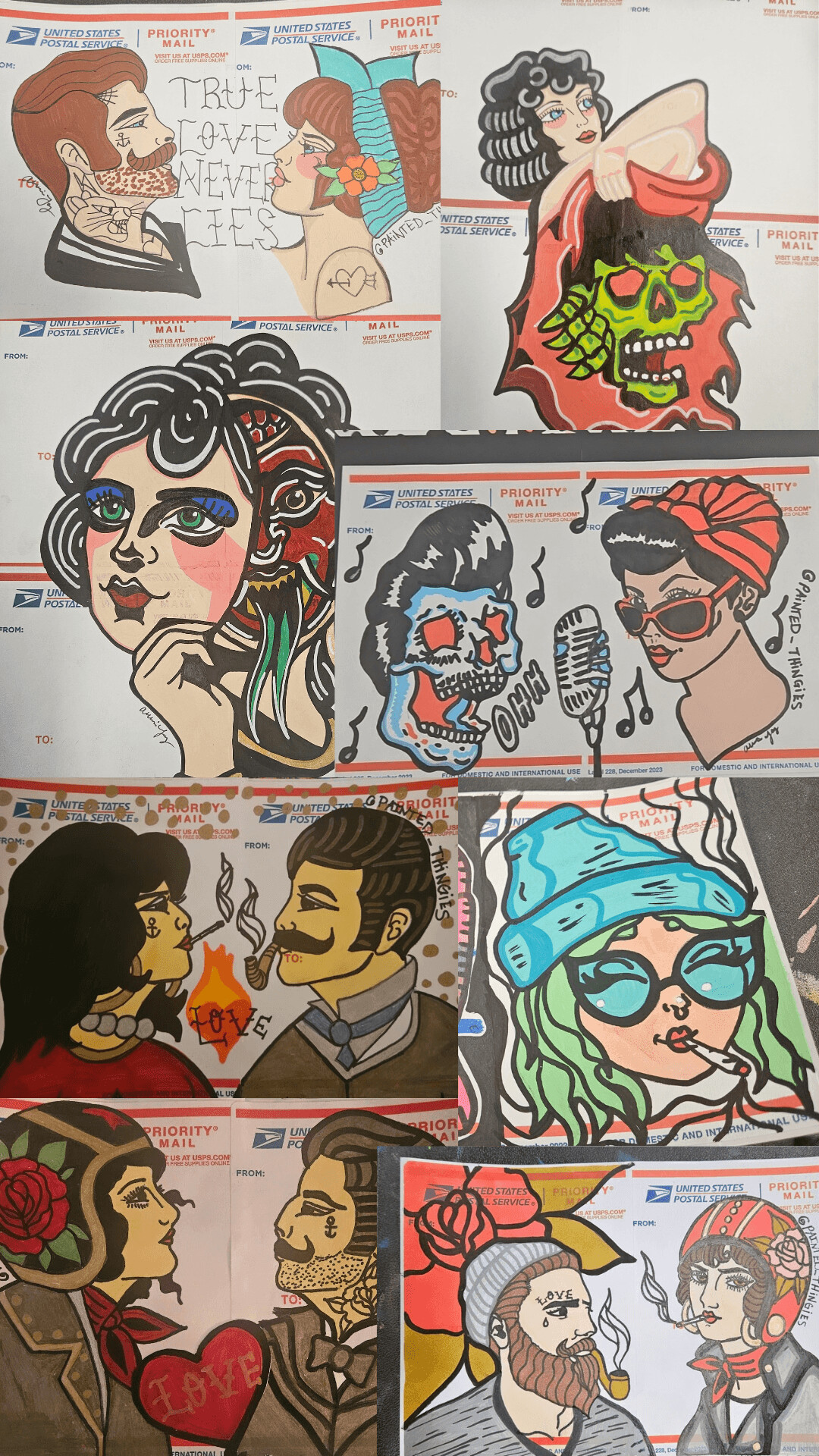

We’d love to hear a story of resilience from your journey.
One story that really highlights my resilience comes from the early days of pursuing my art career, when I faced rejection and criticism for the themes I chose to explore in my work. Much of my art centers on challenging societal norms, particularly around issues like bodily autonomy, sex work, and cannabis—topics that often make people uncomfortable. While I’ve always been passionate about using my art to spark important conversations, not everyone welcomed that message.
I remember being denied access to certain art shows because my pieces were considered “too bold” or “controversial.” Some curators told me outright that my work didn’t align with their vision or that the subject matter might offend their audience. It was frustrating and disheartening to feel shut out for creating art that meant so much to me.
But instead of letting those rejections silence me, I channeled that energy into finding alternative ways to share my work. I embraced street art and sticker art, mediums that are raw, accessible, and impossible to ignore. I started creating murals and trading stickers with artists all over the world, building a network that allowed my messages to reach even more people. Public art became a way for me to bypass the traditional gatekeepers and take my work directly to the streets, where anyone could see it and engage with it.
That resilience has paid off in ways I could never have imagined. Today, I’m proud to say that my art is shown in galleries all over the world—spaces that not only embrace my work but also hold space for my message, my ideals, and my creative passions. These galleries amplify the conversations I strive to start and foster communities that value advocacy and inclusion.
Through this journey, I’ve learned that resilience isn’t just about overcoming obstacles—it’s about finding new paths forward and staying true to your purpose. The rejection I faced didn’t stop me; it pushed me to grow, adapt, and reach even further. My work now challenges comfort zones and inspires reflection, and I’m more committed than ever to creating art that matters. For me, resilience is about making space for voices and ideas that deserve to be heard, no matter the barriers.


What can society do to ensure an environment that’s helpful to artists and creatives?
In my view, society can best support artists, creatives, and a thriving creative ecosystem by fostering an environment that values and invests in the arts as essential, not optional. Here’s how this can happen:
1. **Accessible Spaces for Creation and Exhibition**
Artists need spaces where they can create and share their work without financial or logistical barriers. Society can support this by funding community art centers, galleries, and public spaces dedicated to creatives. Programs that offer free or affordable studio space, exhibition opportunities, and access to materials can make a huge difference, especially for emerging or underrepresented artists.
2. **Fair Compensation and Recognition**
Too often, artists are expected to work for exposure rather than fair pay. Society needs to shift its mindset and recognize that creative work is valuable labor. This means advocating for fair compensation, supporting grants and residencies, and ensuring artists are paid adequately for their time, effort, and expertise.
3. **Inclusive and Diverse Platforms**
Representation matters. Society should actively support platforms that uplift marginalized voices, including women, BIPOC, and LGBTQIA+ artists. By creating inclusive spaces for diverse perspectives, we enrich the creative ecosystem and ensure everyone feels seen, heard, and valued.
4. **Art Education and Community Outreach**
Early access to art education is crucial in fostering a lifelong appreciation for creativity. Schools should prioritize arts programs as much as STEM subjects, and communities can host workshops, classes, and mentorship programs to engage people of all ages. When society invests in teaching creativity, it cultivates not only artists but also a more innovative and empathetic population.
5. **Support for Public and Collaborative Art**
Public art projects like murals and street art make creativity accessible to everyone. Society should encourage these initiatives, funding projects that bring art into everyday spaces. Collaborative efforts like sticker trading and international art exchanges can build global connections and show that creativity knows no boundaries.
6. **Breaking Down Stigmas**
Society needs to embrace art that challenges comfort zones and sparks difficult conversations. By normalizing discussions around controversial themes—like those in my work on women’s rights and autonomy—we can use art as a tool for change and understanding. Supporting bold, meaningful art means supporting growth and progress for everyone.
Ultimately, society thrives when artists thrive. By creating a culture that values creativity, supports artists’ livelihoods, and fosters connections between creators and communities, we can build a vibrant ecosystem where art isn’t just appreciated—it’s integral.
Contact Info:
- Website: https://www.paintedthingies.com
- Instagram: @painted_thingies
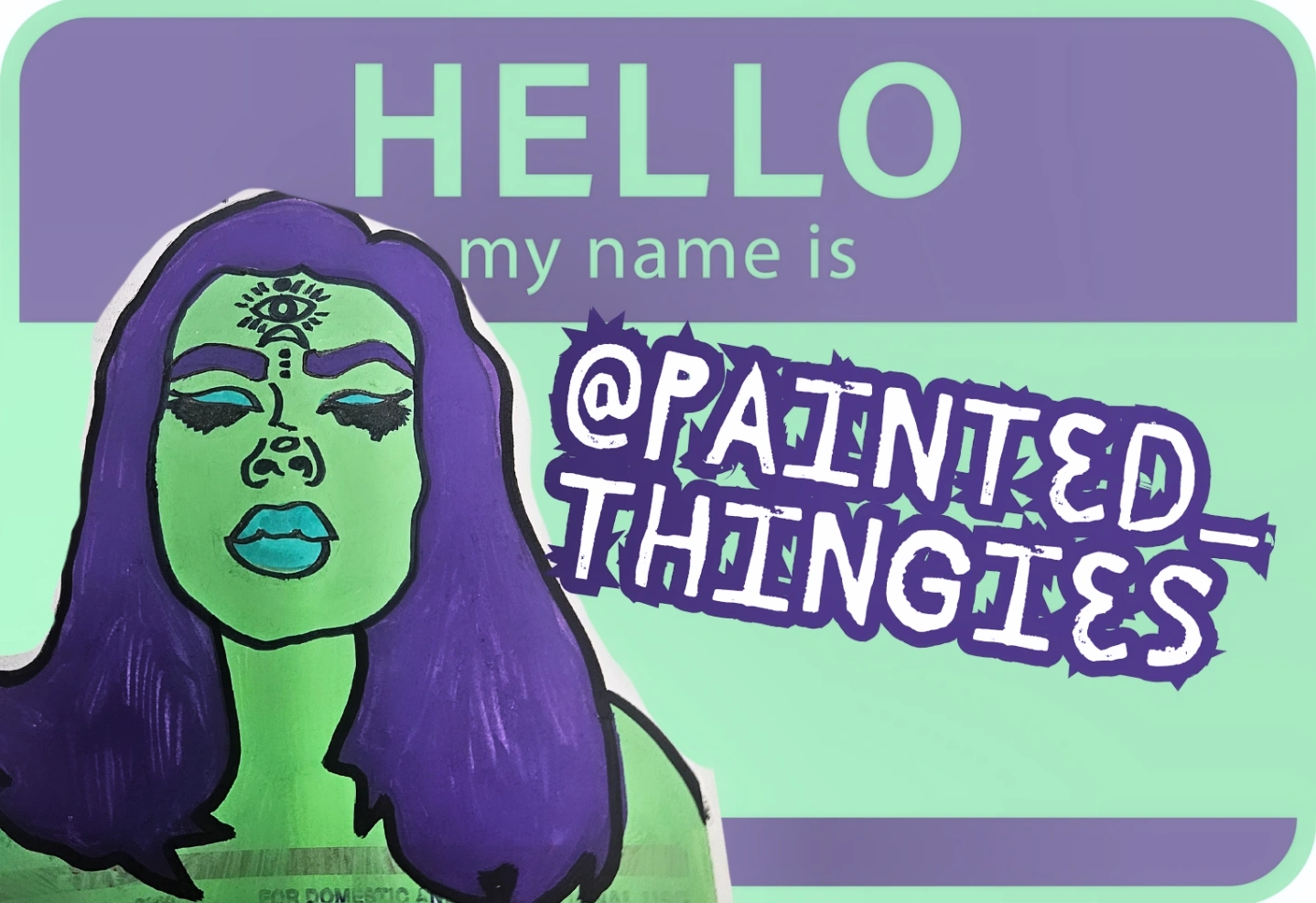
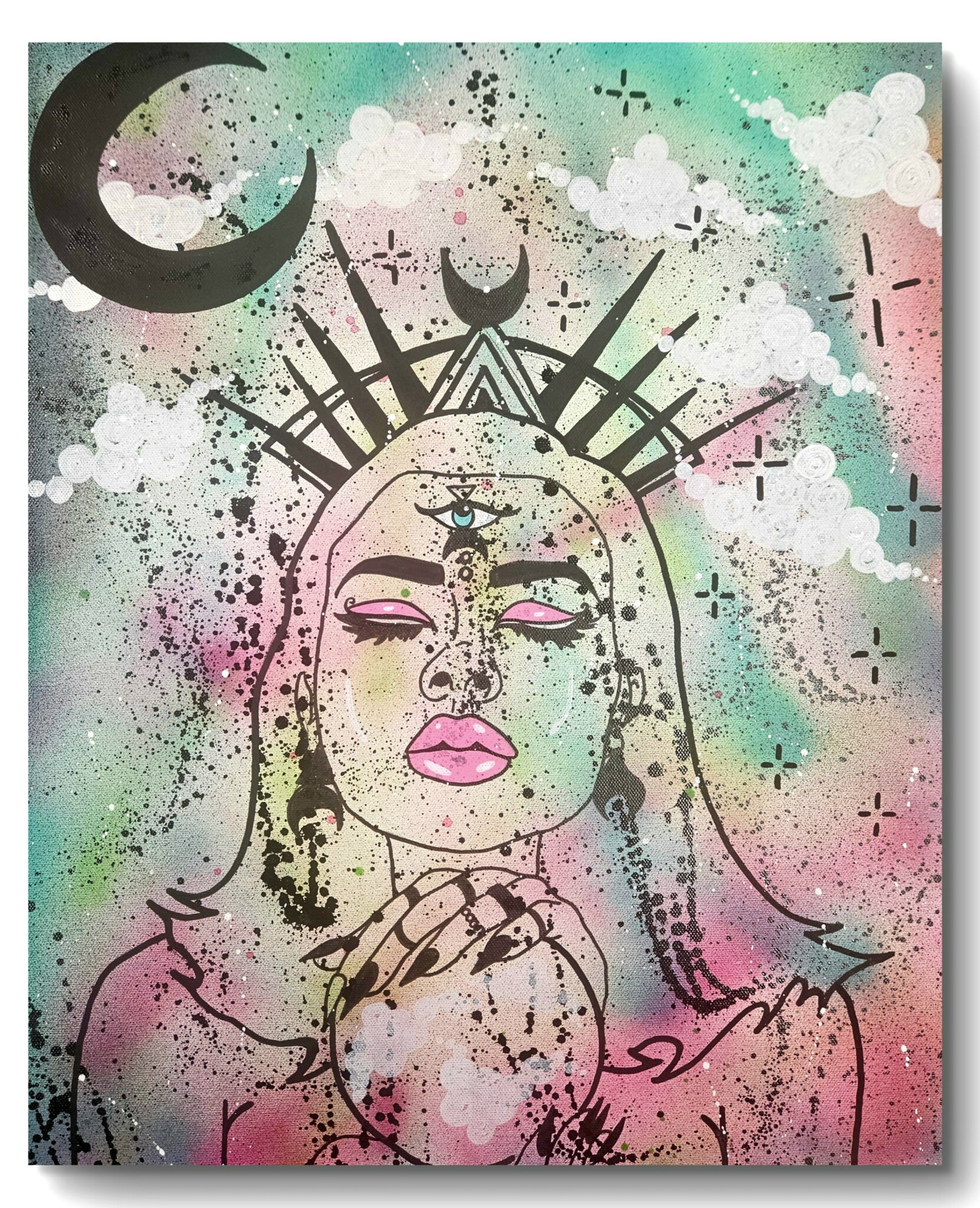
Image Credits
Pictures featuring my original solo works, stickers, and collaborations with @mizchaos


